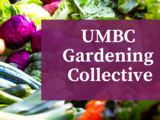Benefits of native plant gardening: Part 2
Benefits, pitfalls, and some of my favorite species
This is the second of two guest posts by Sarah Hansen. To read part one, click here.
Native plant gardening has many benefits
Native plants support pollinators at every stage of their life cycle, and by increasing pollinator populations, we support the entire food chain, including songbirds, frogs, newts, and on up to rabbits, raptors, foxes, and, yes, snakes. Native plants have also evolved to grow in local climates—so, once established, they require minimal to no watering or fertilizing. Native plants can be found for hard-to-grow spots such as on slopes, in areas with poor soil, and in swampy, low-lying areas.
Many native plants are long-lived or reseed easily, so they appear to be essentially immortal. Some should be divided every few years to maintain their vigor. This is a great opportunity to expand your garden, or you can give them away to friends and neighbors to help them start their own. Some native plants, such as milkweeds, also make it very easy for you to collect their seeds, which you can give to friends and neighbors or replant elsewhere yourself.
When choosing native plants, be sure to pick plants that are appropriate for your site. Consider the amount of sunlight, moisture level, and type of soil, such as clay (that would be my yard…), sand, gravel, loam, etc. To provide food sources for critters over an extended period, it also helps to pick a range of plants that bloom throughout the season. If you live in suburbia, chances are you will also need to pick plants that are naturally unpalatable to deer. But expect them to get nibbled occasionally, anyway!
Things to watch out for
Conventional nurseries also sell some native plants. However, buyer beware: Plants labeled “pollinator friendly” are not all created equal. Pollinators like bees and butterflies can be very picky about where they will lay their eggs, and which plants their larvae will consume. These are known as “host plants,” and for the most part, they are native species—species that the insects evolved with over time. The best-known example is that monarchs only lay their eggs on plants in the milkweed family. Adult butterflies are much less particular about where they get their nectar. Any plant that supports adult butterflies may be truthfully labeled “pollinator friendly,” but without host plants for caterpillars to feed on, there won’t be nearly as many butterflies to enjoy the nectar! Lauren’s Garden Service has a great list of some of the best native plants for supporting pollinators.
Sadly, even plants labeled “pollinator friendly” bought at conventional nurseries or hardware stores may be laced with dangerous neonicotinoid pesticides that can harm pollinators—especially bees. The good news is that in response to pressure from consumers and advocacy organizations, many large retailers have promised to phase out neonicotinoids. Consider advocating for your local nursery to sell neonicotinoid-free plants if it still does. Native plant nurseries are most likely very careful not to sell plants with neonicotinoids, but always ask.
Also, if you use any kind of spray to deter pests on your plants, read the label carefully. Some products marketed for residential use can be just as dangerous as those marketed to the agricultural industry, especially if used improperly. There are many options for safe, homemade pest sprays. However, I ask you to pause before you even do that---most insects (unless they're invasive, but that's another post) are an incredibly important part of the landscape and food chain.
Some of my favorites
To close, here are just a few of my favorite native plants (in no particular order) that have done well in my garden in Catonsville, most of which come in many varieties. I’m including the common name and the scientific genus name. Some of these will also be quite happy in containers. Please add your own favorites in the comments!
Bee balm (Monarda)
Blue star (Amsonia)
Goldenrod (Solidago)
Milkweeds (Asclepias): Butterfly Weed, Common Milkweed, Joe Pye Weed
Tickseed (Coreopsis)
Iris (Iris)
Foxglove Beardtongue (and other beardtongues) (Penstemon)
Black Eyed Susan (Rudbeckia)
False Sunflower (Heliopsis)
Coral Bells (Heuchera)
Blazing Star/Gayfeather (Liatris)
Coneflower (Echinacea)
Native Ferns: Christmas, Cinnamon, Lady
With that, I wish you all the joy that comes from creating your own wildlife-friendly garden! While the spring planting season is over, it’s never too early to plan for fall planting, or even next spring. I’d love to hear how it goes for you, or if you have any questions!
Yours in gardening,
Sarah
Posted: July 27, 2020, 5:27 PM
